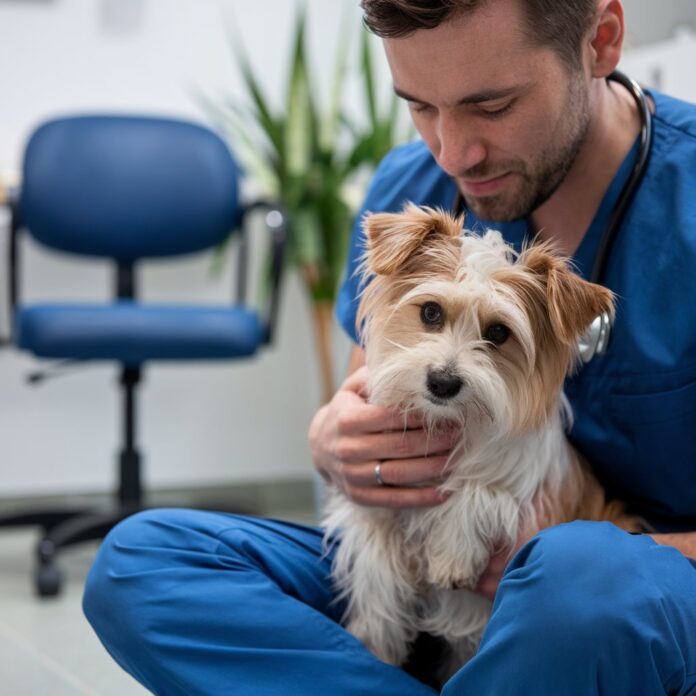Pets, much like humans, can experience anxiety. It’s not always easy to spot, but it’s important to address anxiety to ensure your furry friend lives a happy and stress-free life. This blog post is here to guide you in helping your anxious pet build confidence and find comfort in their surroundings. You’ll learn actionable strategies to ease your pet’s anxiety, with insights into behavior management, environment adaptation, and bonding techniques.
Understanding Pet Anxiety
Anxiety in pets can manifest in various ways, including excessive barking, destructive behavior, or withdrawal. Recognizing these signs is crucial, as they often indicate your pet’s discomfort. Anxiety could stem from past trauma, unfamiliar environments, or even changes within the household. Once you understand its root cause, you can take steps to address it effectively.
Recognizing anxiety early allows you to intervene before it becomes a significant issue. For example, pets might display nervousness during thunderstorms or fireworks. By identifying these triggers, you’re better equipped to manage their anxiety. Every pet is unique, and understanding their specific anxiety cues is the first step toward fostering a calm and confident companion.
Pets with anxiety often benefit from a structured routine. Consistent daily activities can provide a sense of security and predictability. By maintaining regular feeding times, walks, and play sessions, you create an environment where your pet feels safe and assured, reducing overall anxiety levels.
The Power of Positive Reinforcement
Positive reinforcement is a powerful tool in managing pet anxiety. Rewarding good behavior encourages your pet to repeat those actions, building confidence and trust. When your pet faces a situation that typically triggers anxiety, offering treats and praise can help them associate the experience with positive outcomes.
Patience is key when using positive reinforcement. Progress may be slow, but consistent rewards for calm behavior will gradually reduce anxiety. Remember, reinforcement should be immediate and linked directly to the desired behavior to be effective.
Incorporating play and exercise into your pet’s routine can further enhance positive reinforcement efforts. Engaging activities distract from anxiety triggers, allowing your pet to focus on something enjoyable. Over time, this can boost their confidence and overall well-being.
Creating a Safe Space
Providing a safe space for your pet is essential in mitigating anxiety. This space should be quiet, comfortable, and free of stressors. It can be a dedicated room or a cozy corner with your pet’s favorite blanket or toy.
A safe space acts as a retreat, offering your pet a place to relax when anxiety arises. Make sure this area remains consistent, helping your pet feel secure. Over time, they’ll learn to associate this spot with calmness and safety.
Keep your pet’s safe space free from disturbances. If possible, choose an area away from busy household activities. This sanctuary should be accessible at all times, allowing your pet to retreat whenever they feel overwhelmed.
Gradual Exposure to Triggers
For pets with specific anxiety triggers, gradual exposure can be beneficial. This technique involves slowly introducing your pet to the source of their anxiety in a controlled manner. Over time, they become desensitized, reducing stress and fear.
Start with short, low-intensity exposure sessions, gradually increasing duration and intensity as your pet becomes more comfortable. Always pair exposure with positive reinforcement, rewarding calm behavior to promote positive associations.
Consistency is critical in exposure therapy. Regular sessions at comfortable intervals help your pet adjust without feeling rushed or pressured. This patient approach can significantly improve their tolerance and confidence over time.
Encouraging Socialization
Socialization is vital for building confidence in pets. Introducing your pet to new people, animals, and environments can expand their comfort zone and lessen anxiety. Be mindful of your pet’s pace, ensuring each interaction is positive and stress-free.
Organized activities like dog parks or group classes offer excellent socialization opportunities. For instance, puppy training in Salt Lake City provides structured environments for pets to interact with others, enhancing their social skills.
Monitor your pet’s reactions during socialization, taking breaks if needed. Overwhelming experiences can have adverse effects, so always prioritize your pet’s comfort and readiness. Gradual and positive interactions foster a more confident and sociable pet.
Fostering Trust Through Routine
Developing a routine can significantly ease anxiety in pets. Predictable schedules create a sense of order, helping pets understand what to expect each day. This reduces uncertainty, a common anxiety trigger.
Incorporate activities that your pet enjoys within their routine. Regular playtime, walks, and interactive sessions strengthen your bond and provide mental stimulation. A well-structured day leaves less room for anxiety to take hold.
Consistency in routine fosters trust between you and your pet. Over time, they’ll rely on you as a source of stability and comfort, enhancing their confidence and overall well-being.
Conclusion
Addressing pet anxiety is a necessary part of responsible pet ownership. By understanding your pet’s unique needs and employing techniques like positive reinforcement, safe spaces, and gradual exposure, you can help your pet thrive. Remember, patience and consistency are vital. With time, your pet will gain the confidence and comfort they deserve, leading to a happier life for both of you.
For more resources and expert guidance on managing pet anxiety, consider reaching out to professional trainers or veterinarians to tailor strategies specifically for your pet’s needs.




